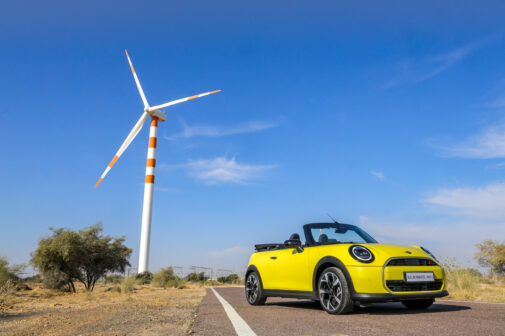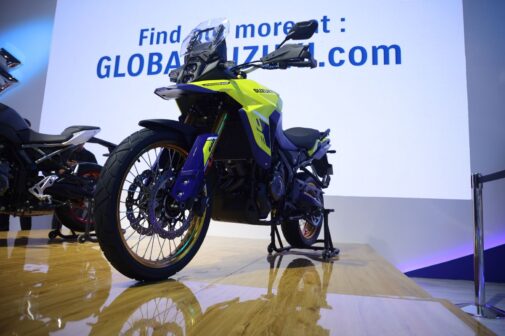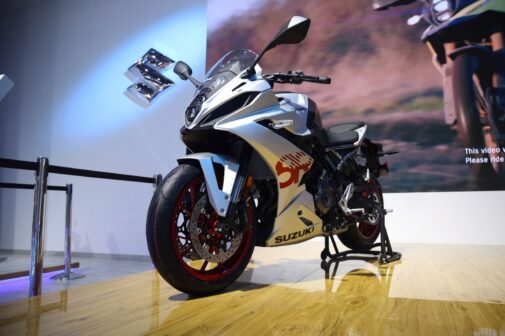MW: What was 2023 like for Suzuki Motorcycles India in terms of growth?
DH: We have been growing consistently; it has been steady, I won’t say gradual. Over the last five years, it has been more than gradual. We have continuously been having a double-digit growth. This year also, so far, in the domestic market we have grown by 23 per cent (April to December). The industry has been growing at a much more moderate rate, so it has been good. You see it as a sign of growth literally for the Suzuki brand, and we are thankful to the customers for the preference they have shown for us and we hope that this continues, thank you to them and thank you to a very, very actively engaged and committed dealer network that we have been able to establish. It’s good teamwork that we have been able to demonstrate.
MW: What’s your dealer network looking like at the beginning of 2024 and if you have any aim to expand further?
DH: We have about, in excess of 900 authorized network touchpoints and about 500+ dealers; that is our network.
MW: What’s your vision for Suzuki Motorcycles India’s portfolio going forward?
DH: We have a pretty robust portfolio and we will continue to upgrade and enhance it. We have always been maintaining that at least one ground-up new product or an upgrade once in two years at least, something or the other, we will definitely be looking to something like that in the Indian market, which has been responding very well to us. That is what our aim is on the product portfolio. Even on this (Bharat Mobility Expo) occasion, we have been able to display the capability that we have. You see the Gixxer flex-fuel version? That is a project we are actively working on. The Govt. of India has been very persistent with its kind of demand on the industry and on two-wheelers specifically on providing solutions in the form of flex fuel because that is, socio-economically a very interesting space for a country like India. We would definitely like to participate and we have shown our very keen interest in developing, participating and investing in that direction. This is one definite area where we have already started from scratch.
MW: Flex-fuels and electric vehicles; would you say one would overpower the other, or will the co-exist happily, considering they are both coming up as alternative fuel sources?
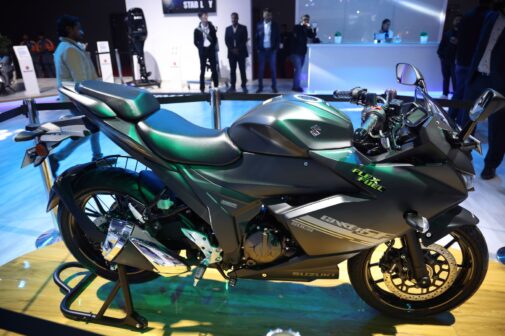
DH: Time would tell that. As things stand today and the understanding we have on the industry as of date, my sense is it is going to be a multi-model kind of an environment that we have entering now. Electric, like we have seen, the penetration levels are still about 5%+, they have got moderated of late because of some moderations from the consumer itself. It is still early days to make a very emphatic statement, but going by the size that we have, and our understanding of the cost of ownership, the comparison between conventional ICE vehicles and a flex-fuel and a pure-electric, my sense is that in the time to come, the consumer sentiment, what works better would decide.
MW: There is a perception that Suzukis are a relatively risk-free buy, but does this also worry you in the sense that your products could be perceived as ‘boring?’
DH: That brings me to the question of sustainability, it is a word used very commonly nowadays, and the context in which most of the time sustainability is used is the environmental one. Sustainability does not have only the environmental aspect; it also has the business and consumer preference dimension. We see sustainability from the lens of what is sustainable from an environmental standpoint. What is sustainable from a larger consumer-goods stand, there is a difference between that. When I say that, if you can even allow me to tell you, it’s that products are purchased for needs and wants. Products that are purchased for wants typically have a shorter shelf life, because want is a very fleeting human emotion, and that is what creates, in marketing language you call ‘fads’, and we say that fads have a shorter life. Anything that is more sustainable is something which addresses a more fundamental need than a superficial want, and that drives the philosophy we have at Suzuki. We would like our products to cater to our customer as a more fundamental need than a fleeting want, and that is why you would see, and you would get this feedback that it’s a very safe bet, a secure bet, and our customer says that if you have a Suzuki bike then ‘I am mentally at peace.’ That, in my mind, is a more sustainable phenomenon than any other, so that’s how we look at the picture.
MW: In what ways does Suzuki leverage technology to understand and respond to customer needs and preferences?
DH: Our entire retail network is integrated on a real-time basis. Data-capturing from that standpoint at what is happening in the ground, what is moving, what is not moving. It is not just at a dealership and manufacturer level, but it is right from the last salesperson that the dealership. That is the level to which our digital integration has taken place. If I were to give you a specific example; you go to our dealership, the salesperson there interacts, people will enquire about a vehicle, he feeds him the information on his smartphone. He has a PIN which transfers it real-time to the data managing software that the dealership operates on. The data transfer is seamless and secure.
MW: Given that the Access is the most popular Suzuki in India, while elsewhere it is globally renowned for its big motorcycles, who exactly is a typical Suzuki customer?
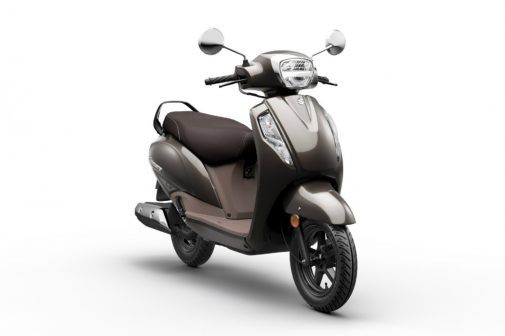
DH: If you talk from an Access standpoint, it is a classic family scooter. You and I, our fathers, uncles, aunts, anybody could be a customer; it is gender neutral, age neutral. From that standpoint it is a mass product and for utilitarian purposes. The rest of the portfolio may not be as demographic-agnostic as the Access is. Other products that we have, whether it is the Burgman, which is becoming increasingly popular, is not as ‘massy’, not as demographic-agnostic as the Access. We introduced the Avenis, which is even more focused on the younger crowd. One known point is that starts anywhere from 18, to right up to 60 years old.
MW: In terms of the Katana, what does the demand-supply situation currently look like?
DH: We have a healthy demand so far. The recent logistics problem impacted a little but volumes have been steady and we have been doing decent numbers.
MW: If there is a Suzuki you would bring back from the past, which one would it be?
DH: If our buyers’ sentiment is still alive, it would be Hayabusa again and again! The first-generation design, they will talk about the third, and ask ‘when is the fourth / fifth coming’.
We have displayed something outside (GSX 8-R, V-Strom DE), let us see what is the response to both these products. What is available in Europe becomes a little easier from a technology standpoint to be available in India, so what we need for the Indian consumer is that if he’s ready, then technology-wise, anything that is Euro 5, is relatively easier for us to bring here.









